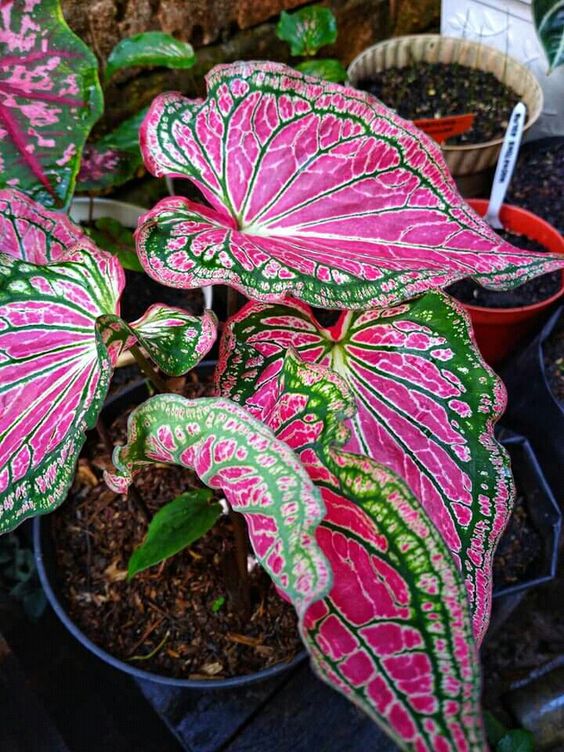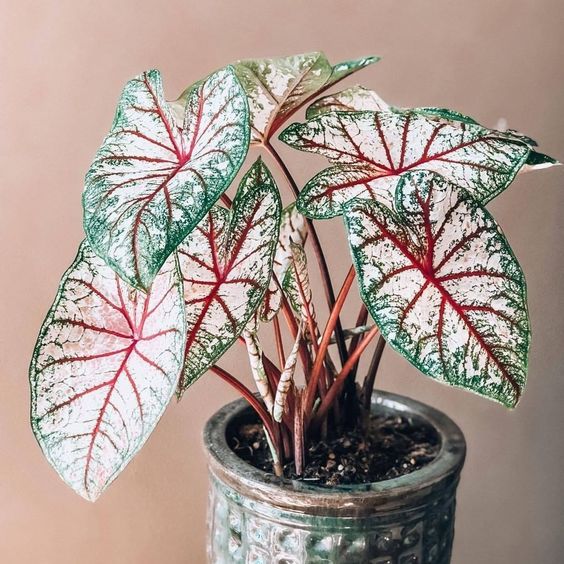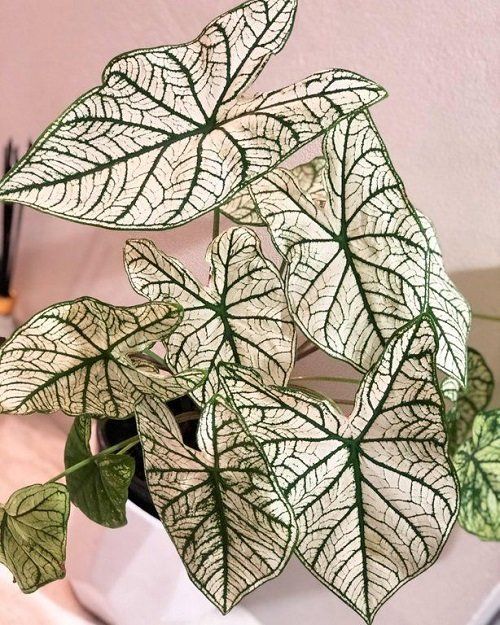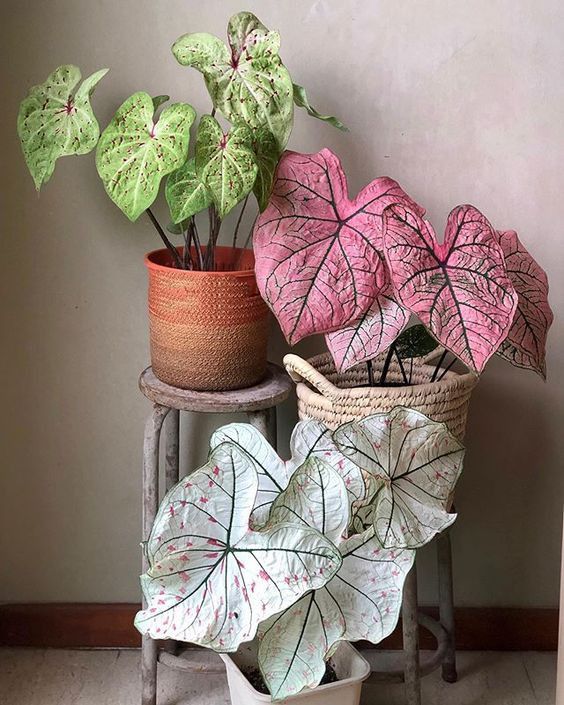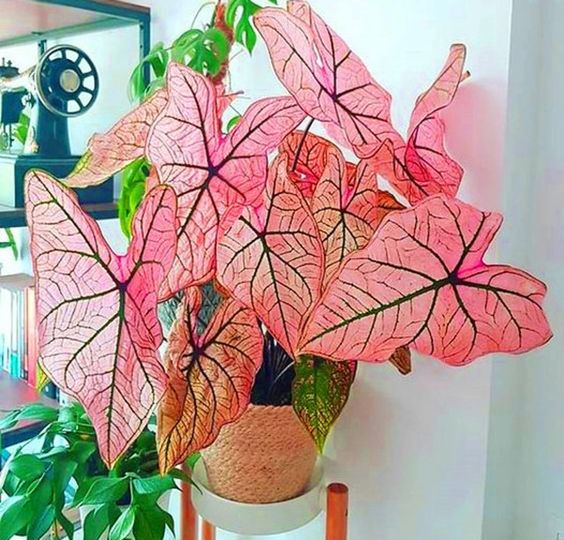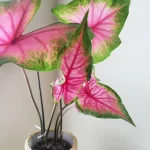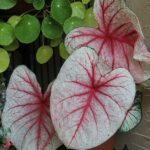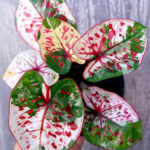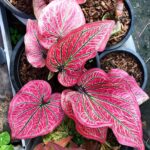So the days are getting shorter and the temperature is dropping, and you’ve been watching your brightly beautiful and happy Caladium slowly wither and die. You watered carefully and made sure the plant had enough light and fertilizer. So what did you do wrong?
Nothing!
If temperatures fall below 15 degrees, caladiums go dormant and die down to the tuber. I have heard from some growers that their caladiums survive year round, especially if they have them indoors and/or on a heat mat, but their instinct is to die off naturally.
However, don’t throw them away! In spring they will come back to life!
While some growers hate the fact that caladiums disappear over the winter, I find it quite magical to see them emerge back through the soil when the weather warms up again – and it means you appreciate them, too considering they aren’t here all year round!
How do I know if my Caladium is going to sleep?
It usually starts when you see the large leaves start to dry, droop and die. The plant’s growth slows and any new leaves are smaller compared to previous new shoots. It is important to ensure that your caladium does not die due to other factors as well. Check the soil to make sure it is not waterlogged (they need well-drained soil) and also keep an eye out for pests. If it is fall or winter and your plant has no other problems, it will simply enter its natural dormancy period.
So what do I do?
If you live in a very cold climate with snow and frost and your caladiums are outside, it is important that you dig up the bulbs. However, if they are indoors or the winters are milder, simply leave them in the pot so they can sprout again in the spring.
If you prefer to dig them up, store the dried out bulbs in a cool, dark place until you are ready to plant them. As a rule of thumb, plan on about three months of rest for another five months of growth in the spring.
When can I expect my Caladium to come back to life?
Again, it depends on your local climate, but you should see some tiny sprouts in the first few weeks of spring. Water sparingly until you have a few nice leaves, then enjoy your colorful baby again!
 careyfashion.com Carey Fashion
careyfashion.com Carey Fashion
